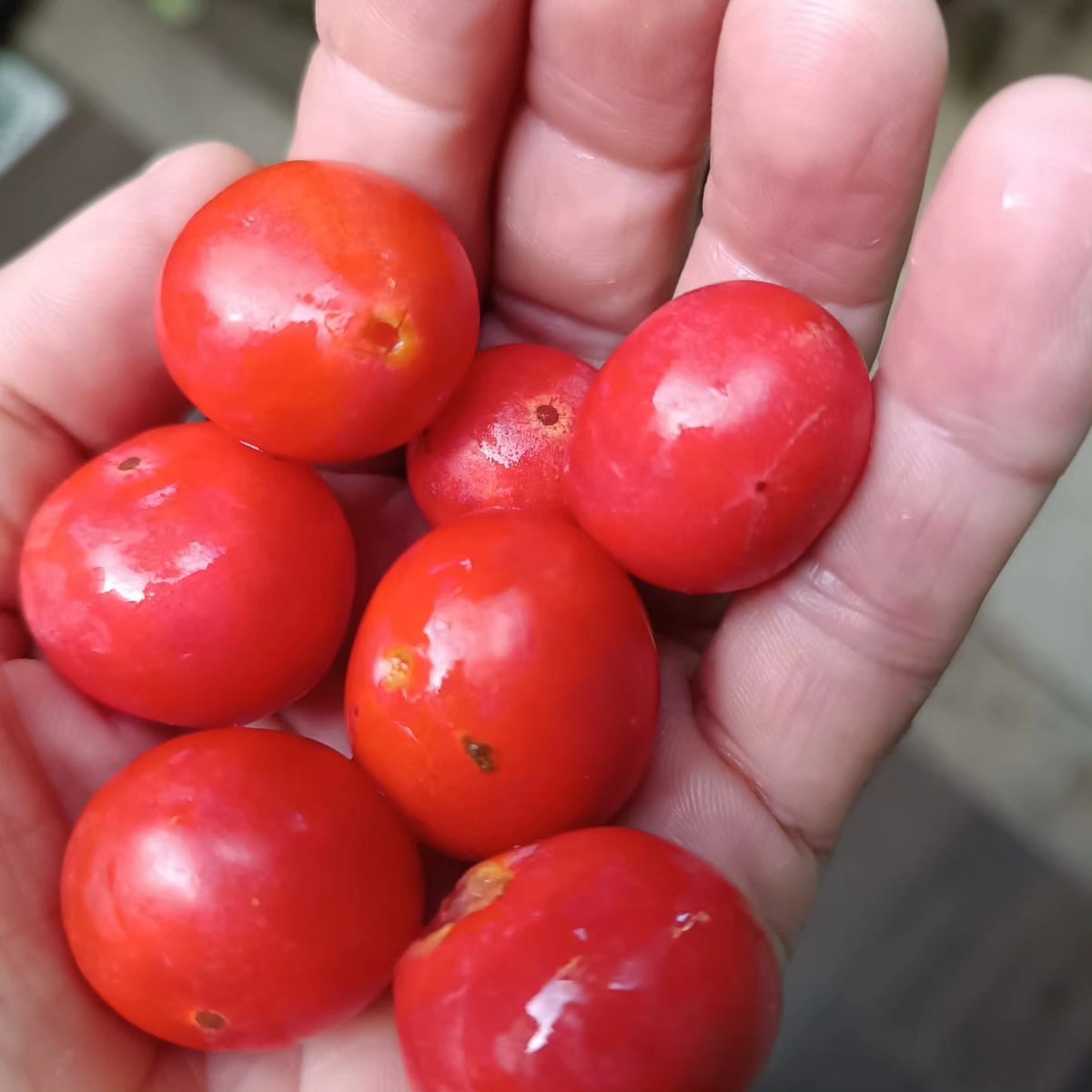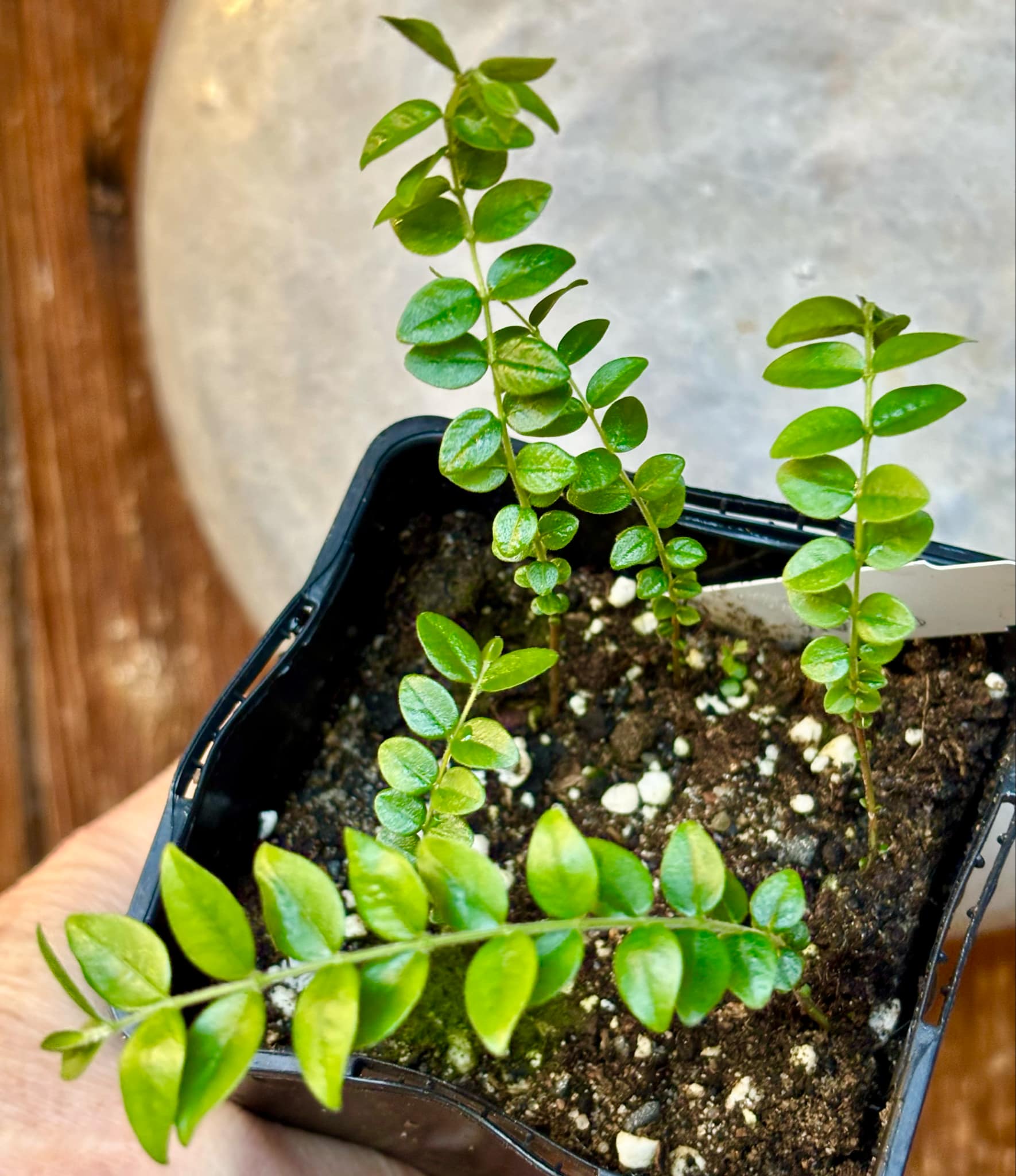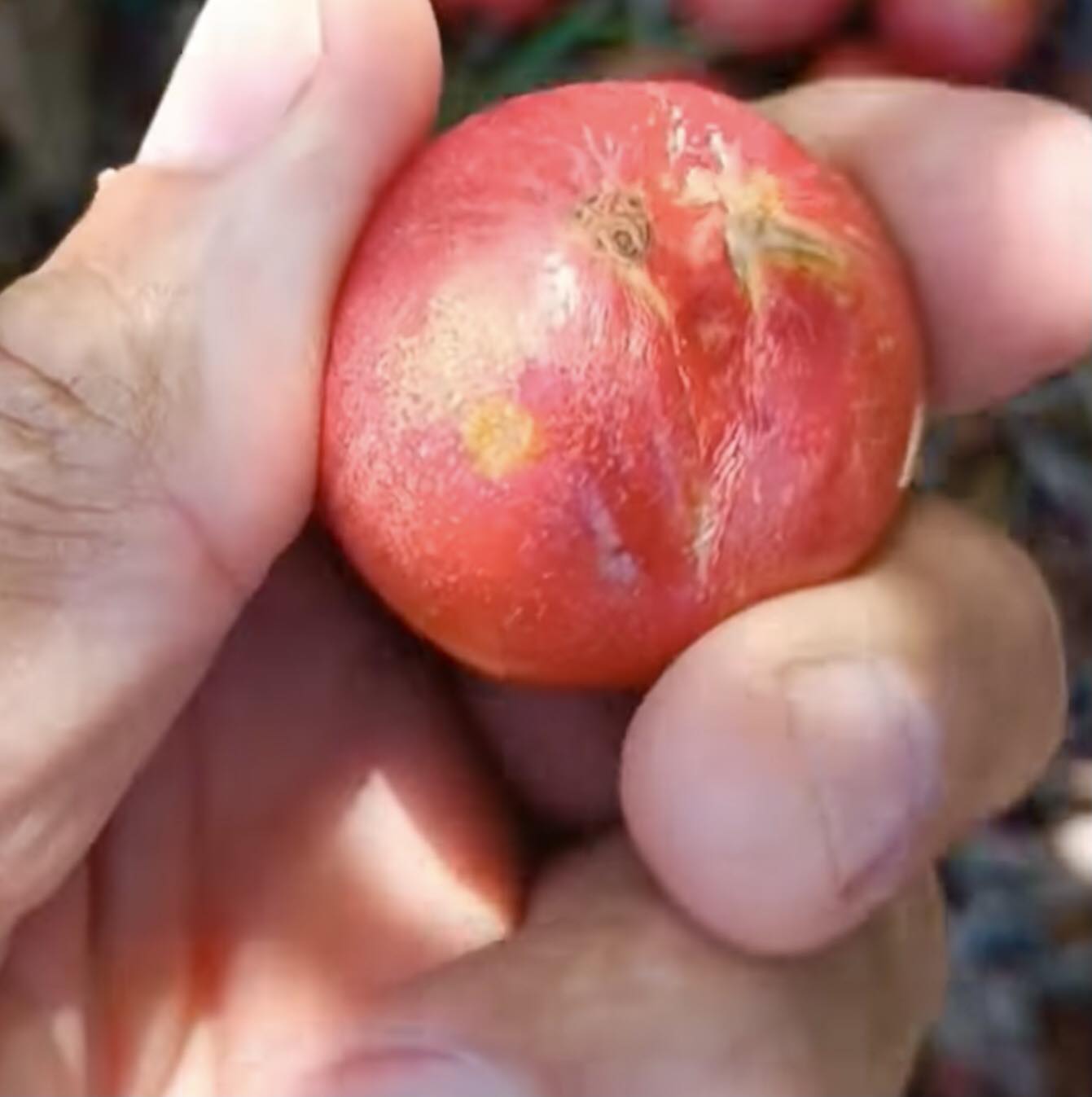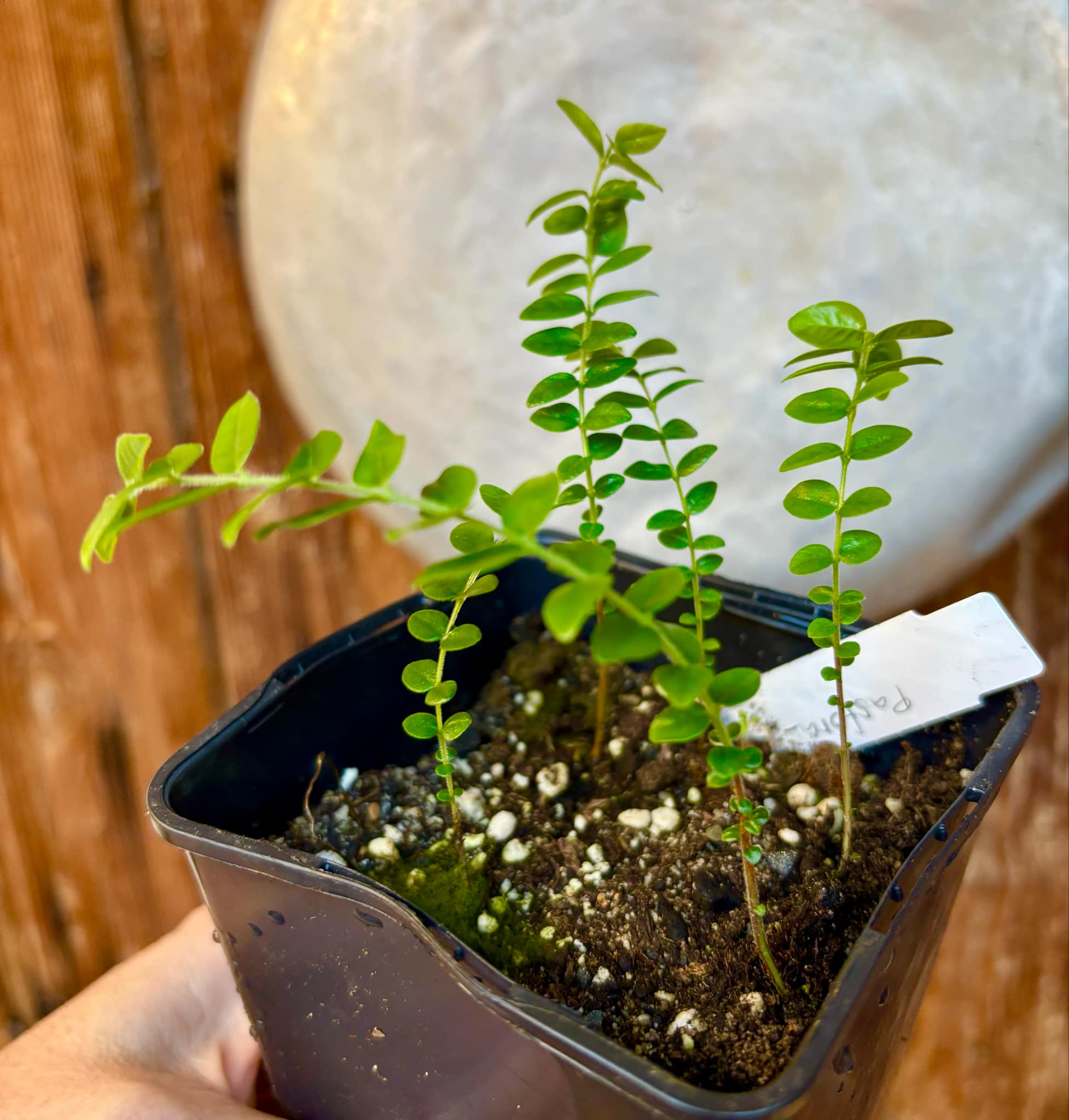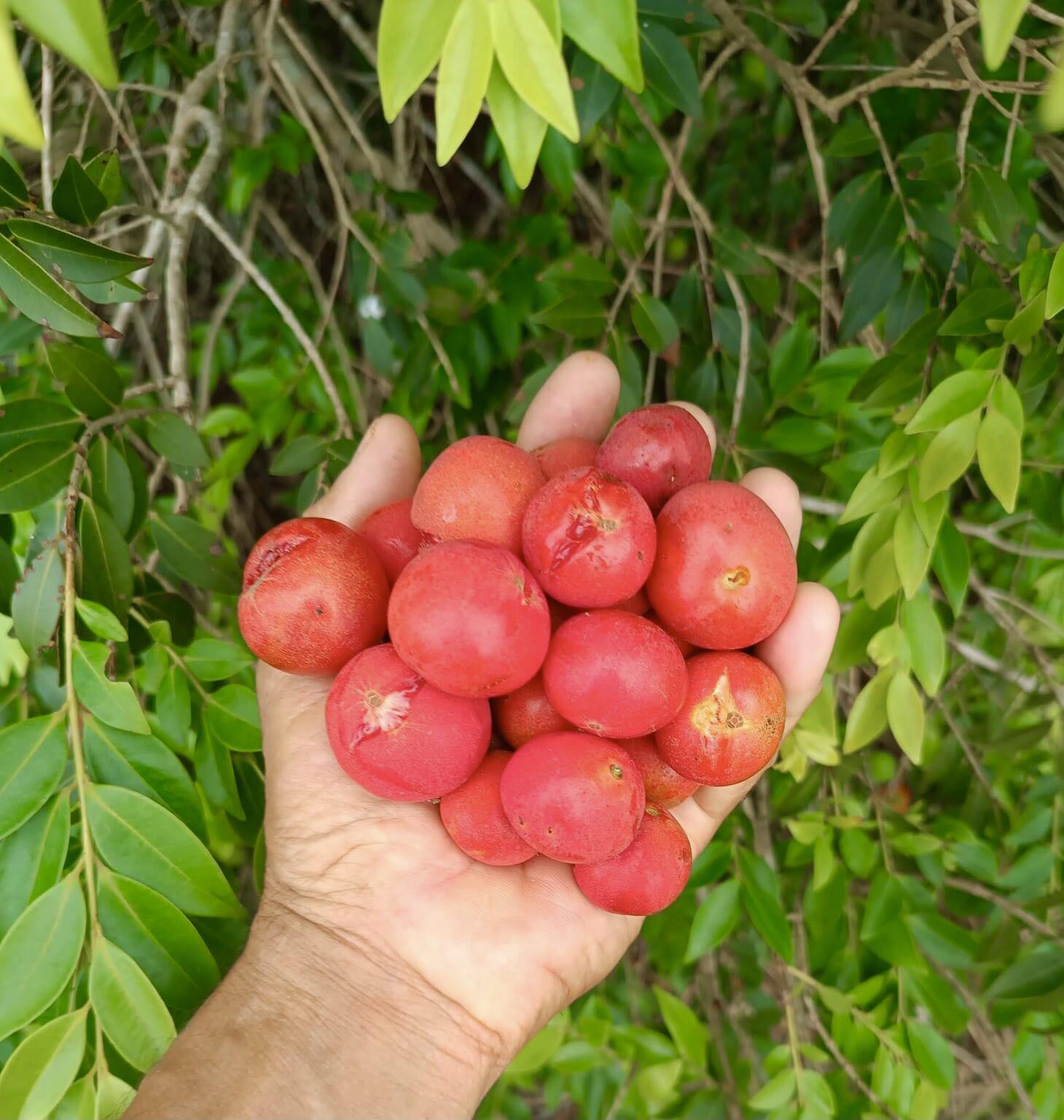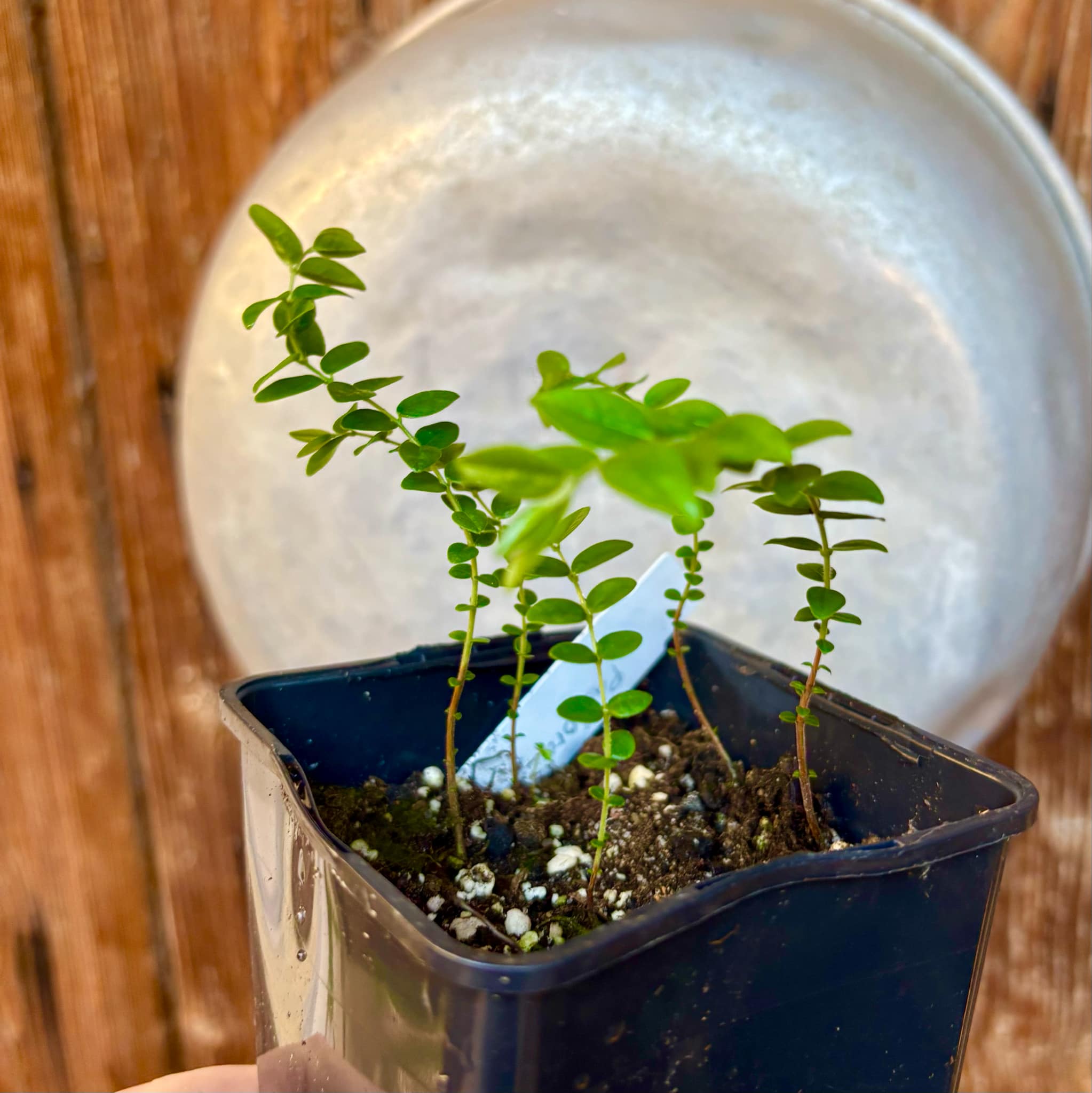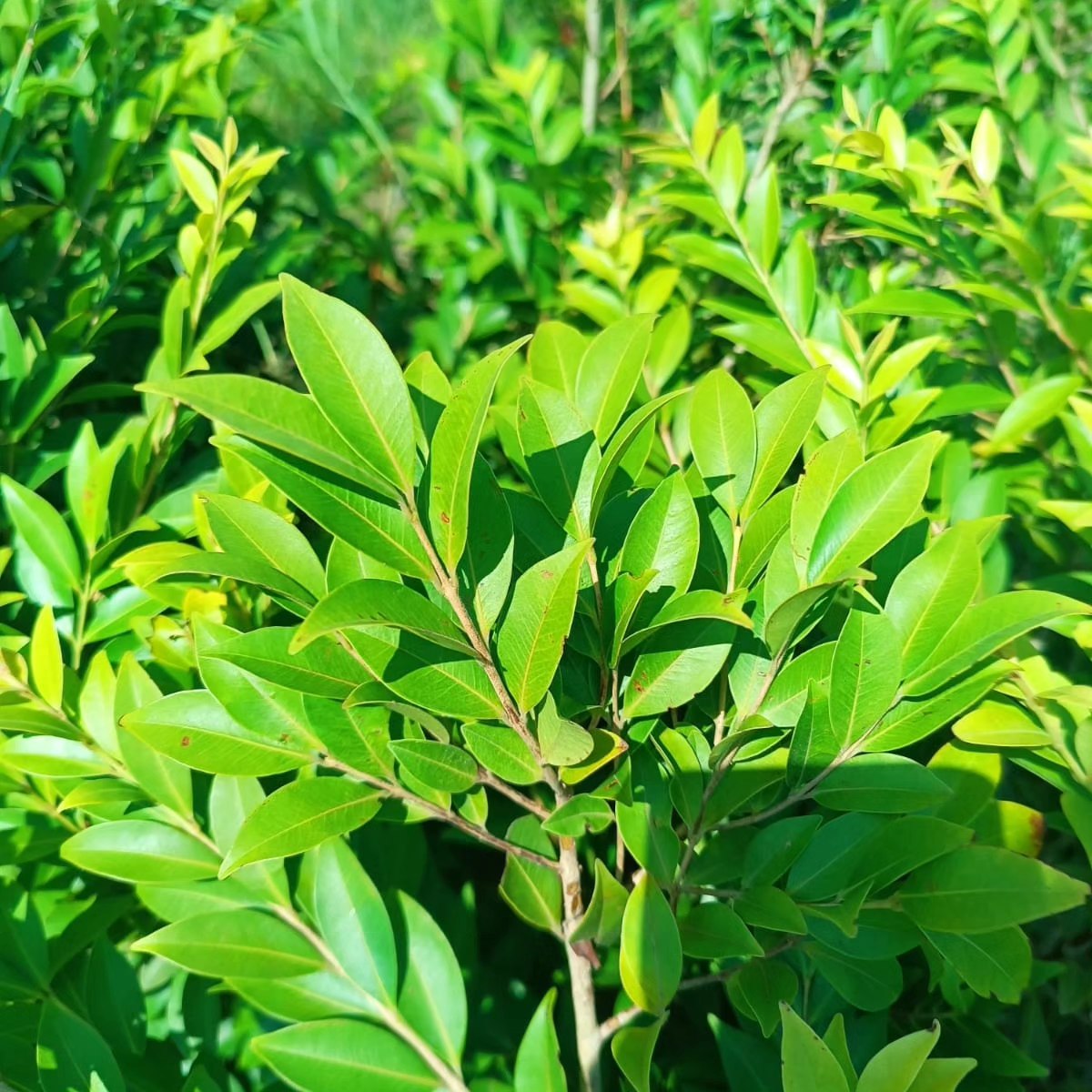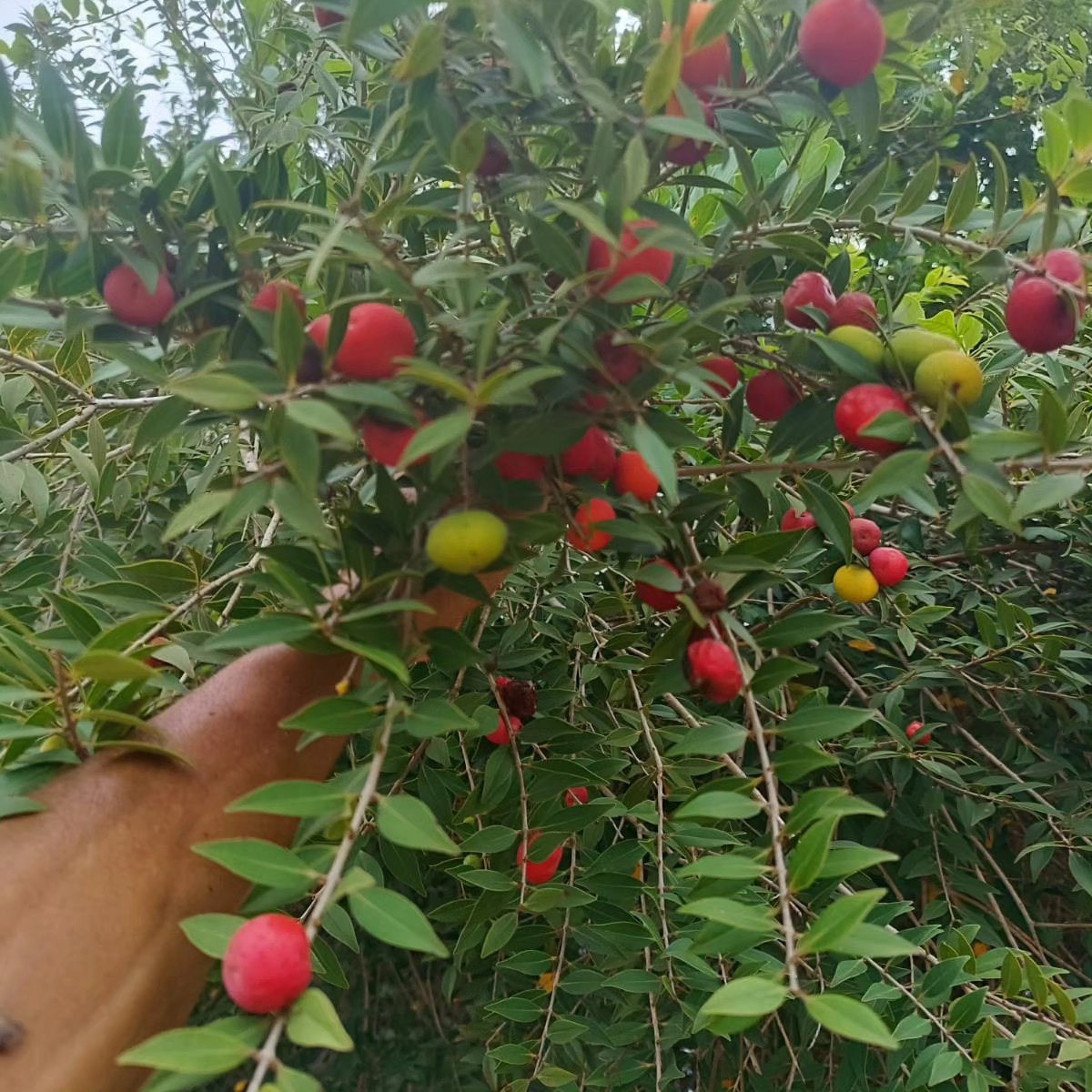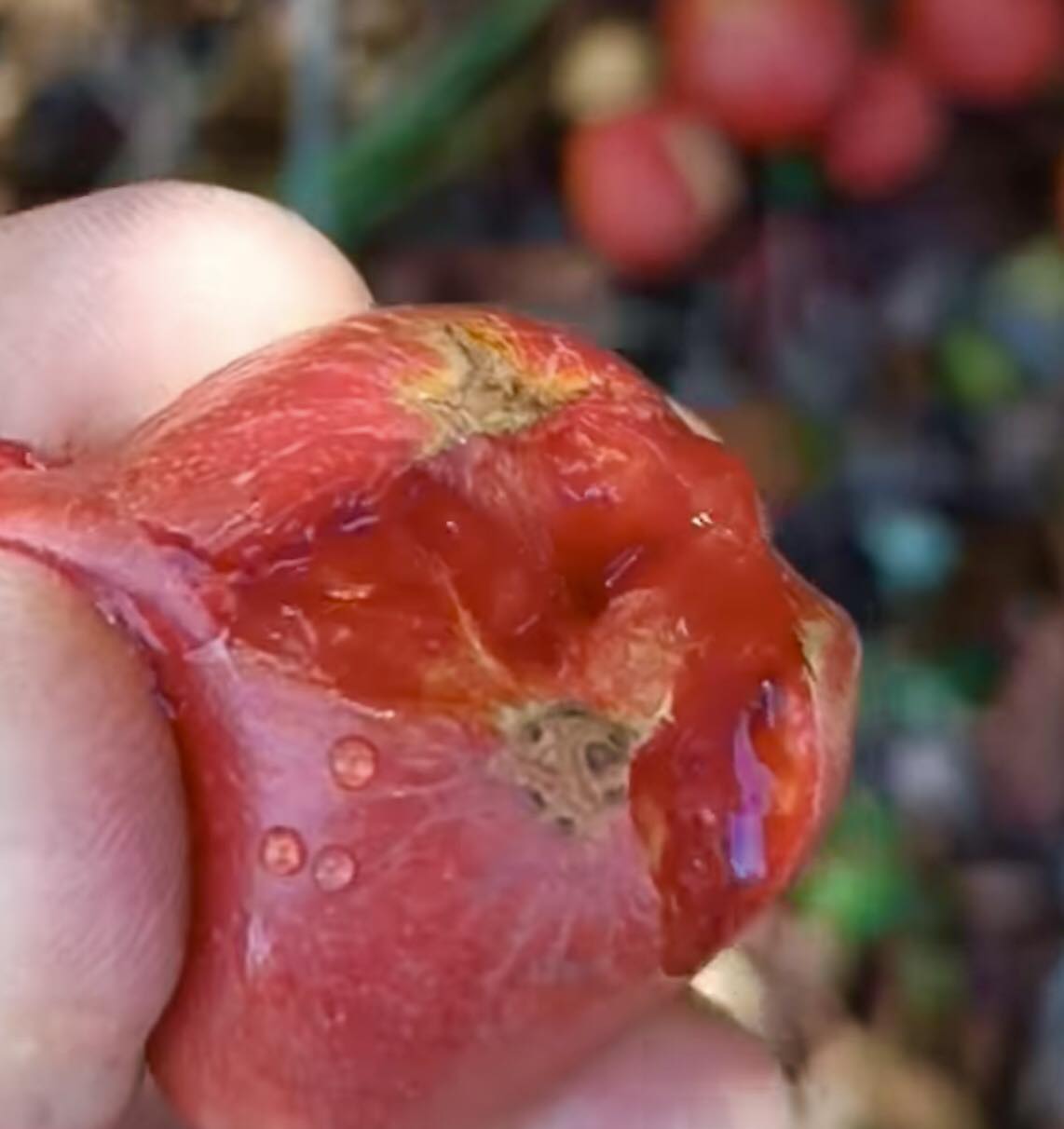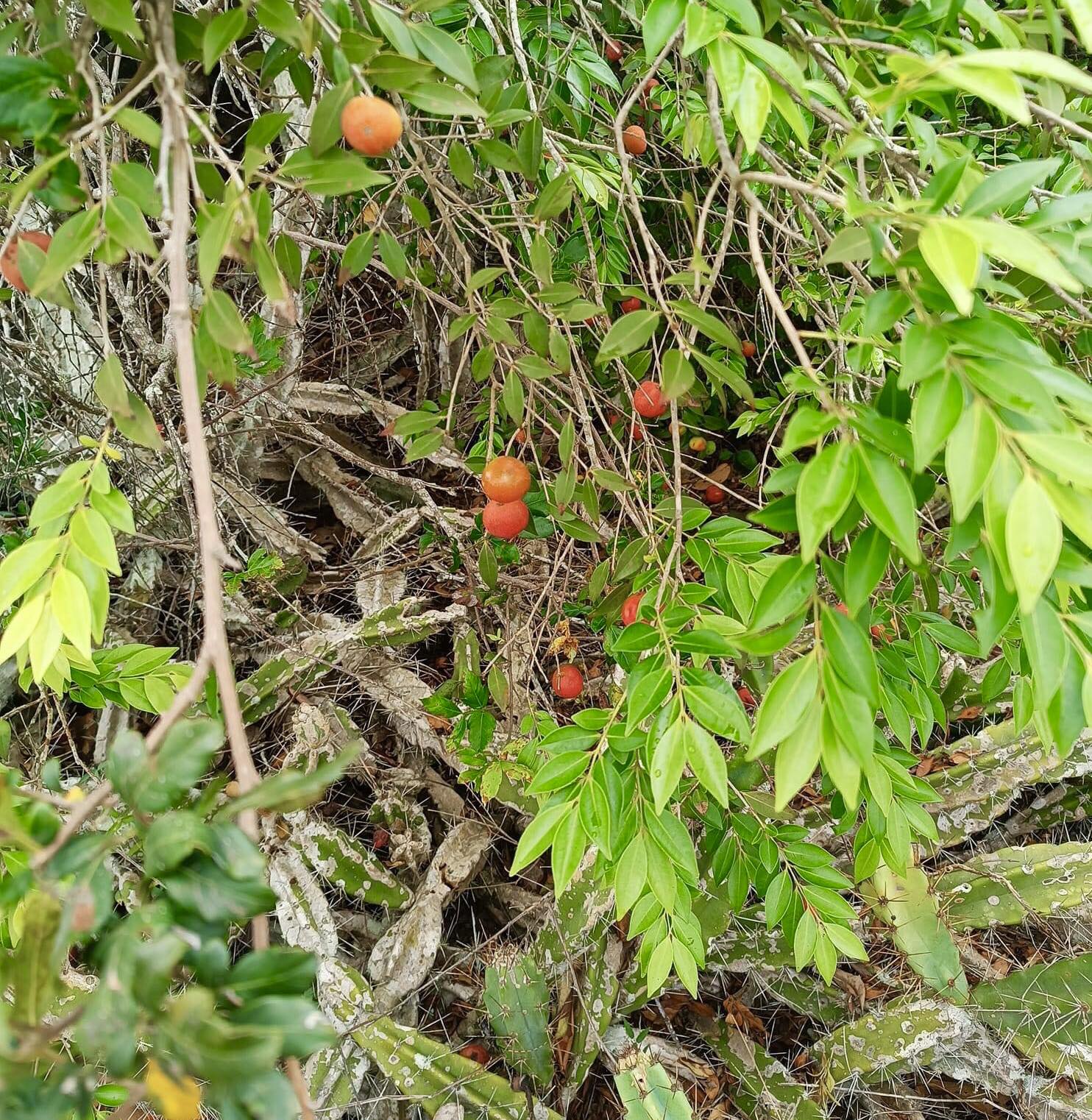5 seedlings - Myrciaria sp Pastora - 5 small potted seedlings / 5 kleine, getopfte Sämlinge
Myrciaria sp Pastora
Family / Familie: Myrtaceae
origin from / Herkunft: Brasil / Brasilien
Climate / Klima: temperate to warm (10-25C / 50-77F) / gemäßigt bis warm (10-25C / 50-77F)
Taste / Geschmack: very good taste / sehr guter Geschmack
you buy / sie kaufen: 5 small potted seedlings / 5 kleine, getopfte Sämlinge
Delivery EU only
Here you get 5 small seedlings in one pot.
A Botanical Sensation from Brazil
In October 2023, a remarkable new species of Myrciaria was discovered in the Restinga of São João da Barra, located in the northern part of Rio de Janeiro state.
Named Myrciaria sp. Pastora — “Pastora” meaning “shepherdess” — this plant marks a true milestone in tropical fruit discoveries.
What Makes Pastora Exceptional
Strikingly Large Red Fruits
Unlike most red-fruited Myrciarias, which tend to bear small fruits, Pastora produces unusually large, vibrant red fruits.
Approximately twice the size of those from the rare and coveted Myrciaria glomerata.
Exquisite Flavor
The fruits are sweet, tangy, and full of aromatic tropical character — a rich flavor profile that stands out even among elite tropical fruits.
Early Fruiting
A juvenile plant only 60 centimeters tall was already fruiting heavily when found.
This suggests a rare trait among tropical Myrciarias: fast maturation and early yield.
Highly Rare and Collectible
While Myrciaria glomerata is already considered the “holy grail” among collectors due to its scarcity, Pastora exceeds it in size, uniqueness, and potential.
Its rarity and outstanding qualities make it a true collector’s treasure.
Origin and Growing Conditions
Habitat: Coastal Restinga region with sandy soil.
Soil: Well-drained, lightly sandy, moderately fertile.
Light: Prefers full sun to partial shade.
Winter care: Minimum temperature of 10°C (50°F). Ideal for greenhouses or bright indoor environments with mild heating.
For Collectors, Growers, and Connoisseurs
Myrciaria sp. Pastora is not just a plant — it’s a living discovery. Cultivating it means owning a piece of tropical botanical history.
Extremely limited availability – a must-have for serious collectors.
Hier bekommt ihr 5 kleine Sämlinge in einem Topf.
Eine botanische Sensation aus Brasilien
Im Oktober 2023 wurde in der Restinga von São João da Barra, im Norden des brasilianischen Bundesstaates Rio de Janeiro, eine neue Myrciaria-Art entdeckt, wie sie bisher noch nie beschrieben wurde: Myrciaria sp. Pastora – benannt nach der "Schäferin", die symbolisch für diese außergewöhnliche Entdeckung steht.
Was Pastora so besonders macht
Große rote Früchte
Im Gegensatz zu den meisten rotfruchtigen Myrciarias, deren Früchte eher klein sind, trägt Pastora außergewöhnlich große Früchte – etwa doppelt so groß wie jene der berühmten Myrciaria glomerata.
Aromatischer Geschmack
Die Früchte sind süß-säuerlich, sehr aromatisch und bieten ein intensives, tropisches Geschmackserlebnis.
Frühe Fruchtbildung
Bereits eine 60 Zentimeter kleine Pflanze trug bei ihrer Entdeckung zahlreiche Früchte.
Das weist auf eine ungewöhnlich schnelle Fruchtbildung hin – ein seltener Vorteil bei tropischen Fruchtpflanzen.
Extrem selten und von hohem Sammlerwert
Die Myrciaria glomerata gilt bereits als eine der wertvollsten Arten unter Sammlern.
Pastora übertrifft sie in Fruchtgröße und Rarität deutlich. Ihre Seltenheit und ihre Eigenschaften machen sie zu einer echten Besonderheit für Liebhaber tropischer Raritäten.
Herkunft und Standortansprüche
Fundort: Küstennahe Restinga-Region mit sandigem Boden.
Boden: Durchlässig, leicht sandig, mäßig nährstoffreich.
Licht: Sonnig bis halbschattig.
Überwinterung: Temperaturminimum 10 Grad Celsius. Ideal für Wintergärten oder Gewächshäuser mit leichter Beheizung.
Für Sammler, Züchter und Genießer
Myrciaria sp. Pastora ist nicht nur eine Pflanze – sie ist ein botanisches Ereignis.
Wer sie kultiviert, hält ein Stück tropische Entdeckungsgeschichte in den Händen.
Nur in äußerst begrenzter Stückzahl verfügbar – ein Muss für jede ernsthafte Sammlung.

